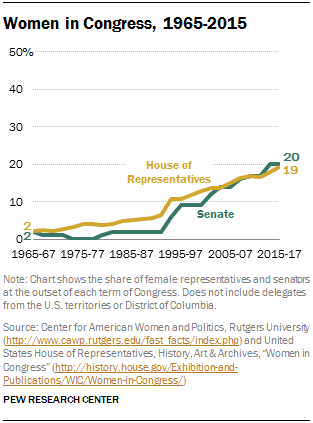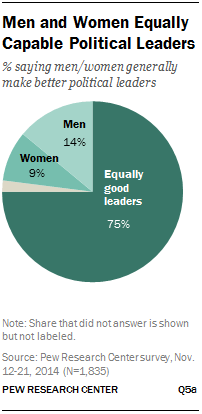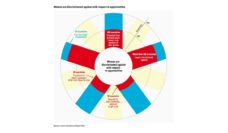Record numbers of women are running for office, especially Democrats, many inspired by the Trump election. However, large numbers of losses are expected. Not only are more women running this campaign year, but so are more men, and thus the share of women candidates has only moderately increased. Many of the women on the left are running in districts more likely to elect a male Republican candidate. But losing isn’t the end. The experience, name-recognition, and respect gained from the process both within one’s party and in the public eye, are valuable. NPR reporter, Danielle Kurtzleben, says this wave of women is not seen as “the next election’s worth of candidates” but rather “the next generation’s worth.”
How Women Are Underrepresented
Although the number of women in government has been rising since the 1960s, we are still struggling for equal representation. Women make up half of the population and yet barely hold 20% of the seats in the U.S. Congress. Pennsylvania does not have a single woman in its Congressional delegation. It’s not just the House and Senate that lack fair representation. Throughout all levels of government, the percentage of women is far below that of men. For all statewide executive offices (governors) and local offices (mayors) women make up less than one quarter of the seats. The percentage of women in state legislature positions is larger, highest in Arizona and Vermont at 40%. Positions of power are still unquestionably dominated by men.

Why Women Are Underrepresented
According to Pew Research, 75% of Americans believe that men and women are equally capable of leading. That’s across the board for Republicans, Democrats, and Independents. Women also win elections at the same rate as men and, once in office, demonstrate equal quality in performance. So why are there fewer women in office? Until this recent surge, women weren’t running. Gendered social roles and lack of encouragement have prevented women from feeling the confidence to run. Women reported feeling significantly less qualified and doubting their abilities. It took Senator Kirsten Gillibrand two decades as a law firm associate, and ten years of volunteering before she felt confident enough to run for office. Yet she knew as young as age 8 that she would one day run for office.

The Good that Women Do for Public Health
Women being elected isn’t just good for visual representation. Women govern differently than men do when in office. A study by Michele Swers from Georgetown University found that women cosponsor the most healthcare legislation, with Democratic women cosponsoring the most overall and Republican women cosponsoring twice as many bills as their male Republican colleagues.
Women also tend to focus on education, civil rights, and social welfare. Women were significantly more likely to sponsor bills in these area than men between 1973 and 2014. Women tend to have more legislation enacted as well, with women in Congress averaging 2.31 bills enacted versus 1.57 for men.
Women in Congress also fare better when it comes to federal money. On average, women in Congress brought 9% more money back to their districts for federal programs than men did. These programs focus on agriculture, education, research, and more.
Today, social networks focused on women and leadership, such as EMILY’s List (acronym for “Early Money Is Like Yeast”) and Maggie’s List help train and support women to become educated, authoritative, and to run strong campaigns.
So What’s Next?
What can we do to get more women into office? According to the Center for American Women and Politics, a suggestion to run is the strongest predictor of whether a candidate will enter a political race. Women need to be encouraged to run, and not just once. They need to be encouraged repeatedly. Rep. Monica Youngblood thought it was “a joke” when she was first called to run for Congress, and needed to be asked several times and encouraged by family before she felt confident enough to do so. Women are also more motivated when encouraged with phrasing that suggests opportunities to fix problems and improve communities. Women who are already campaigning need donations. Women face a gender gap in campaign financing, and many cite fundraising as a barrier to running for office. While women donate based on who they support regardless of gender, men tend to donate to male candidates, thereby tipping the scale in their favor.
Women leaders such as as Susan Collins, Tammy Duckworth, and Tammy Baldwin have focused their efforts on improving health, human rights, and equity. We can all play a role in getting more women into office, and we’ll all be better off if we do.
Feature image: Cheng-ting Chang, Women Power!, used under CC BY-NC-ND 2.0. Graphics from Pew Research Center Social & Demographic Trends, Women and Leadership, Women in Congress, 1965-2015 and Men and Women Equally Capable Political Leaders, January 13, 2015.














